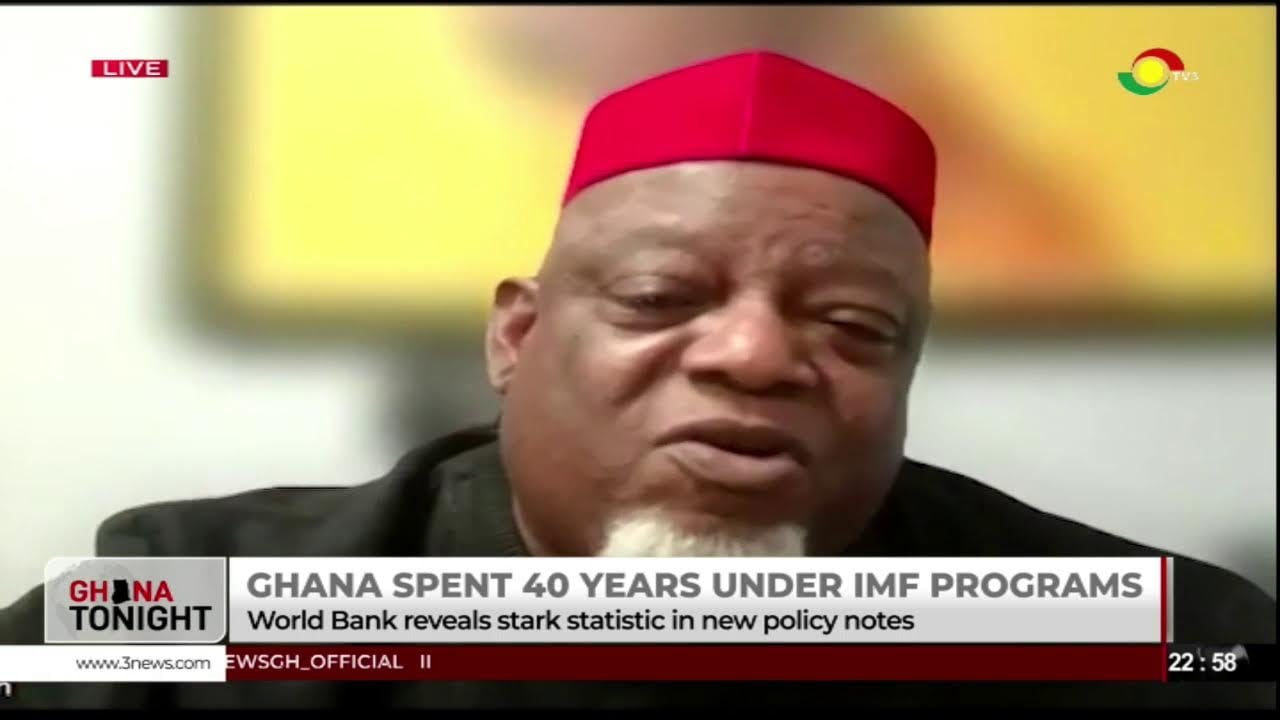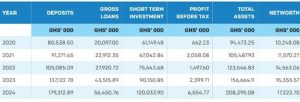
By Enock YEBOAH-MENSAH
Wall Street teaches survival, but in Mr. Mensah’s world, it also whispers lessons about love. One quiet Sunday afternoon, his son Kofi joined him in the family garden, not to ask about stock prices or bond yields, but also enquire about something far more elusive: Marriage.
Mr. Mensah, a seasoned investment banker who had watched fortunes rise and fall, empires merge and collapse, leaned back in his chair with the calm of a man who had seen both triumph and ruin.
To him, the union of two lives carried the same weight as any corporate deal: it required vision, trust and above all, due diligence. With a knowing smile, he began to speak, not in the language of romance, but in the only language he trusted most: Finance.
MERGERS VS. ACQUISITIONS
“My son,” he began, choosing his words carefully, “partnerships in life and in business often follow the same rhythm. A merger happens when two equals decide to join forces, each bringing strength and balance to the union, creating something stronger together.
An acquisition, however, is when one party enters another’s household, appearing unequal at first. Yet, if guided with wisdom and respect, both can still find harmony and mutual gain.”
Kofi nodded slowly, recalling how some couples blended seamlessly while others struggled to manage the imbalance of roles and expectations.
“There are also different forms of unions,” his father continued. “A horizontal merger is like two people from similar backgrounds uniting: easy to relate but sometimes challenging to avoid redundancy. A vertical merger happens when each partner offers complementary skills, one supplying what the other lacks, creating a complete chain. Then there’s the conglomerate merger, where two entirely different worlds meet, unfamiliar yet rich with possibilities if both learn to embrace differences.”
Kofi chuckled. “So, differences don’t stop a union from working?” “Exactly,” replied Mr. Mensah.
FRIENDLY VS. HOSTILE UNIONS
“Not all unions are smooth,” Mr. Mensah warned, his voice steady with experience. “Sometimes, the journey is a friendly merger, where both families come together willingly. The conversations are open, agreements are mutual, and the process ends with shared laughter, handshakes and a sense of celebration. These are the unions that feel natural, where trust lays the groundwork for the future.”
He leaned back, his eyes narrowing. “But not every story unfolds that way. Some resemble a hostile takeover, where one suitor pushes forward even against resistance. It is less about romance and more about persistence, sometimes even force. And in between lies the tender offer; a direct, transparent proposal laid out with promises, resources and commitments, designed to persuade the hesitant party. Each approach carries its own risks and rewards, reminding us that the form of the union can shape its chances of long-term survival.”
Kofi grinned. “So, proposals are tender offers?” “Precisely,” his father laughed.
THE PROCESS
“Every merger or acquisition unfolds in stages,” Mr. Mensah explained:
- Courtship (Initial talks) – This is the stage of casual exploration, where both sides test the waters, exchange pleasantries and consider whether there’s potential for a deeper relationship.
- Engagement (Due diligence) – Here, the questions become serious. Partners dig into values, habits and finances, seeking to uncover strengths and hidden risks before making a commitment.
- Wedding (Legal closing) – At this point, everything becomes formal. Contracts are signed, vows exchanged, and the union is officially sealed.
- Honeymoon (Integration) – The celebration fades and the real test begins; blending routines, aligning systems and learning to live as one without losing balance.
Kofi sighed. “So, the honeymoon is actually the integration phase?” “Exactly,” Mr. Mensah smiled.
ECONOMICS OF MERGERS AND AQUISITIONS
Kofi tilted his head. “But what makes all this worthwhile?”
“Economics,” his father answered firmly. “At the heart of every merger lies the pursuit of synergies; the promise that one plus one can become more than two. Companies merge to cut duplicate costs, expand their reach and tap into opportunities neither could achieve alone. When it works, the results can be transformational: streamlined operations, stronger market share and accelerated growth. It is like combining two farms: one with fertile soil and the other with abundant water. Together, they can yield a harvest far greater than either could alone.”
He paused, then cautioned, “But economics has two sides. The same deal that looks perfect on paper can turn sour in practice. Integration can prove costly, with overlapping systems, conflicting priorities, or simply the human struggle of blending different cultures. Transaction expenses, legal battles and unforeseen risks can erode the value everyone expected. That is why not every union, no matter how promising, delivers what it promises. True economic gain is never automatic, it must be earned through careful planning, patience and disciplined execution.”
Kofi thought for a moment. “So, the economics decide whether the union flourishes or fails?” “Exactly”, responded Mr. Mensah.
THE SECOND ACT: INTEGRATION
Mr. Mensah leaned forward. “Remember, my son, the real story begins after the wedding. That is when the excitement fades and the work begin. Two people or two companies must blend routines, traditions and even egos. In marriage, it is learning how to share space, handle money together and raise children with different parenting styles. In M&A, it is aligning systems, restructuring leadership and merging corporate cultures that may not see the world the same way. Many deals that look perfect on paper crumble at this stage, not because the numbers were wrong, but also no one prepared for the human side of integration.”
He paused, then continued, “This is what I call the Second Act. It is where patience, communication and adaptability make or break the union. A merger that ignores culture clashes will see key employees walk out, just as a marriage that ignores differences in values will breed resentment. Successful integration is not just about efficiency but also creating harmony between two identities without losing the strengths that make each unique. The honeymoon may be short, but if partners handle the Second Act wisely, the story can last for decades.”
Kofi raised an eyebrow. “So even if the deal looks perfect on paper, it can fail in practice?” “Yes,” his father said. “That is why savvy or shrewd executives know that the real risk lies not in the transaction itself but in the integration; the Second Act is where strategy meets people, and it is at this point that most mergers succeed or fail.”
FINANCE LENS: VALUATION, FINANCING AND RETURN
“Look at it through finance,” Mr. Mensah continued. “Every union has numbers behind it,” Mr. Mensah explained. “There is valuation; what is each party truly worth? Then comes financing; do you pay in cash, shares or debt? And finally, return; is the investment justified over time? Take Disney’s $7.4 billion acquisition of Pixar in 2006. The price seemed high, but Disney was not just buying films; it was securing Pixar’s unmatched creative culture. Paying in shares aligned incentives and the returns have been remarkable; Pixar has fueled Disney’s global box office dominance for more than a decade.”
He leaned closer. “But not all stories end well. Daimler’s 1998 merger with Chrysler looked brilliant on paper: a German engineering giant combining with an American icon. Yet cultural misalignment destroyed the deal, leading to billions in losses when Daimler eventually sold Chrysler. Even here at home, Ecobank’s acquisition of The Trust Bank in 2011 expanded its market presence but came with integration pains around systems and branches. That is why finance must always be the lens; it reveals whether the numbers, structure and returns truly justify the union.”
Kofi smiled. “So finance is the lens that keeps emotions in check?” “Precisely”, replied, Mr. Mensah.
DEFENSIVE TACTICS: THE UNWANTED SUITOR
“But son,” Mr. Mensah added in a lower tone, “not every union is desired. Sometimes, an unwanted suitor comes knocking and families must defend themselves.” Kofi leaned in, intrigued, as Mr. Mensah began outlining the clever defenses families could employ to protect their “marriage assets.” “Think of a golden parachute as a prenup guaranteeing huge alimony if things go wrong,” he explained. “The sheer weight of it makes any suitor think twice.” Kofi chuckled. “That would make some people vanish before the engagement is even announced.” Then came the poison pill: sudden, costly demands from family and friends the moment an unwelcome suitor appears. “So, basically making yourself too expensive to marry?” Kofi asked, shaking his head. Next was the staggered board, slowing decisions by requiring approvals from different elders in small batches. Kofi smirked. “That would test anyone’s patience, especially if the elders are known for long meetings.” Some families even insisted on supermajority voting, needing 80% agreement from the extended family before giving the green light. “At that rate, I might stay single forever,” Kofi groaned.
Mr. Mensah continued with the dual-class shares, where parents reserve veto power no matter what the majority thinks. Kofi laughed. “Ah, typical parents, they always have the final say.” He then explained the white knight and white squire defenses: choosing a preferred suitor or calling a trusted ally to stand by your side, keeping pushy candidates at bay. “That one makes sense, it is better to choose wisely than settle under pressure,” Kofi nodded. “A loyal uncle or cousin would do just that,” he added with a smile. Some families went even further with crown jewel defense, giving away prized possessions to become less attractive, or the bold Pac-Man defense, flipping the script by proposing to the suitor themselves. Kofi frowned at the first and burst out laughing at the second. “Throwing away your best assets just to avoid someone? And flipping the script? That’s wild, but I like it!”
Finally, Mr. Mensah laid out the last, more extreme strategies. Litigation defense meant taking a suitor to court for harassment, while leveraged recapitalization involved taking on heavy obligations to make yourself a daunting prospect. Kofi raised an eyebrow and sighed, realizing the costs involved. “Hmm… but wouldn’t that also weigh you down even if the suitor leaves?” Lastly, the ESOP or family defense, allowed one to share stakes in their future with loyal family and friends, creating such strong bonds that outsiders could not easily win you over. Kofi smiled warmly. “Now that makes sense, building loyalty around you so no outsider stands a chance.”
UNIVERSAL TRUTH: DOUBLE-EDGED RELATIONSHIP
As the shadows lengthened across the room, Mr. Mensah’s voice dropped to a near whisper, carrying the weight of experience. “Whether in business or marriage,” he began, “partnerships are double-edged. They magnify our greatest strengths; creativity, resilience, ambition but also expose our weaknesses; pride, impatience, misjudgment.
They promise growth, opportunity and shared triumphs, yet demand patience, understanding and unwavering effort in return. At the heart of any successful partnership lies more than clever strategy, financial acumen, or market insight. True success comes from alignment; alignment of values that guide decisions, alignment of vision that shapes the future, and alignment of commitment that sustains the bond when challenges inevitably arise.”
MOMENT OF CLARITY: THE LONG ROAD AHEAD
Kofi sat back in silence, the weight of his father’s words sinking in. For the first time, he realized that both mergers and marriages were never defined by the moment of agreement; the signatures, the vows, the celebrations but by the long road that followed.
The true test lay not in striking the deal but in sustaining it, in navigating challenges, integrating differences and building something stronger than what each party brought alone. A poorly chosen or poorly managed union, whether in business or in life, could drain not only money but also time, energy, and peace of mind. Yet a well-matched and carefully nurtured one had the power to multiply wealth, amplify joy, create resilience, and leave behind a lasting legacy that outlived both partners.
As the sun dipped behind the horizon, he realized his father’s mini lecture/lesson was not just about love or finance; it was also more so about life itself.
LESSONS FOR INVESTMENT BANKERS (AND THOSE PREPARING FOR MARRIAGE)
Due Diligence is everything
Bankers never close a deal without stress-testing the numbers. The same applies to marriage—investigate values, habits and long-term vision. Skipping due diligence in love is as risky as buying a company without reading the Balance Sheet.
Integration Determines Success
In M&A, the hardest part is not the signing, it is integration. Two companies must align cultures, systems and teams. In marriage, it is about blending families, finances and daily lives. Without successful integration, the deal collapses no matter how glamorous the wedding looks.
Synergies Drive Growth
No banker approves a merger without synergy potential. Likewise, marriage should multiply, not divide, strengths, networks and opportunities. The best unions unlock growth greater than what each partner could achieve alone.
Terms and Governance Prevent Crises
In finance, poorly structured deals lead to disputes and losses. In marriage, unclear expectations about money, roles and responsibilities lead to conflict. Agree on your “terms sheet” early; transparency is cheaper than litigation or divorce.
The Wrong Partner is a Bad Investment
Bankers know that one bad acquisition can wipe out years of profits. The same is true in marriage: the wrong choice drains emotional, financial and even physical resources. A wise investment banker chooses deals—and life partners—with the long game in mind.
Discussion Questions
- How does due diligence in M&A relate to assessing compatibility in marriage?
- Why is integration often the hardest part of a merger or marriage?
- How can synergies create value in both business and personal partnerships?
- Which defensive tactics are most effective for protecting a deal—or a relationship?
- Do you agree that alignment of values and vision matters more than strategy or money? Why or why not?
PREVIOUS CASE (EPISODE 4) DISCUSSION SOLUTION
Was the Adjeis’ decision to lend instead of buying property wise or reckless?
The decision was wise, not reckless, though unconventional. Conventional advice pushed them toward real estate; a safe, low-risk investment with predictable returns.
However, the Adjeis identified an unmet market need: traders who were profitable but excluded from formal credit. By leveraging their understanding of cash flows and market rhythms, they created higher potential returns than property could offer.
They mitigated risk through disciplined lending practices: small, frequent loans, collateral in goods or social capital, and selective borrower choice. Their approach transformed ?10,000 into a scalable lending operation, proving that informed, community-based lending can outperform traditional investments.
Key takeaway: Strategic risk, when informed by market insight, can generate wealth far beyond conventional “safe” options.
How did their proximity to traders improve their risk assessment compared to banks?
Proximity allowed the Adjeis to observe traders directly in their environment:
- They saw which stalls sold quickly, which traders managed stock well, and who had consistent cash flow
- They could judge character and repayment discipline through social interactions rather than relying on formal credit reports or collateral
- Immediate visibility allowed dynamic adjustments: loan size, repayment schedule, and follow-up were all responsive to real-time behavior
Banks, by contrast, rely on standardized procedures, audited statements, and collateral—tools that fail to capture the nuances of informal trade cycles. The Adjeis’ embedded presence turned “risk” into predictable, measurable behavior, improving loan performance dramatically.
Key takeaway: Ground-level knowledge can outperform formal indicators in markets with high information asymmetry.
Could banks replicate the “Makola model” at scale without losing control of defaults?
Replication is possible but challenging. Banks would need to:
- Embed loan officers within markets or partner with trusted local agents
- Offer micro-loans aligned with cash flows instead of rigid monthly schedules
- Develop real-time monitoring systems to track repayment and market activity
- Leverage technology and mobile platforms to reduce operational overhead
Challenges include maintaining operational efficiency, preventing fraudr and scaling social-trust mechanisms. Unlike a family like the Adjeis, banks cannot rely purely on personal relationships and reputation; they need data-driven substitutes for judgment and monitoring.
Key takeaway: Scaling informal lending requires balancing personalization with technology and standardized risk management.
What risks come with reputation-based lending, and how can they be mitigated?
Risks:
- Manipulation: Borrowers may overstate reliability or leverage social ties unfairly
- Limited enforcement: Reputation works best in tight communities; outside these, defaults may rise
- Bias and exclusion: Social perceptions may unfairly favor some groups, leaving others underserved
Mitigation strategies:
- Combine reputation with cash flow analysis and collateral where possible
- Use community monitoring but supplement with digital tracking of sales and repayments
- Introduce graduated loan sizes: start small and increase exposure as repayment behavior proves reliability
Key takeaway: Reputation is a valuable risk tool but must be supported with objective measures to prevent moral hazard.
Should banks design hybrid lending products, formal in structure but informal in repayment style?
Yes. Hybrid products can bridge the gap between formal financial rigor and market realities. Features could include:
- Loan amounts approved formally but with repayment cycles matched to cash flow (daily, weekly, or after market sales)
- Flexible collateral arrangements (goods, inventory, or digital guarantees)
- Embedded or partnership-based market liaison officers to assess risk and monitor performance
- Incentives for timely repayment leveraging social recognition or digital rewards
This approach reduces exclusion, improves financial inclusion, and allows banks to tap into high-volume, low-value markets without compromising control.
Key takeaway: Hybrid models can combine discipline and trust, creating scalable and sustainable lending solutions for informal sectors.
The author is a Strategy, Leadership and Finance Enthusiast, an Mphil Finance graduate of the University of Ghana Business School, a member of the Institute of Chartered Accountants, Ghana and a part-time lecturer at the UGBS.
Email: [email protected]
The post CASES IN FINANCE – EPISODE 5: Marriage is the riskiest merger you will ever undertake: Understanding Mergers and Acquisitions (M&A) appeared first on The Business & Financial Times.
Read Full Story















Facebook
Twitter
Pinterest
Instagram
Google+
YouTube
LinkedIn
RSS